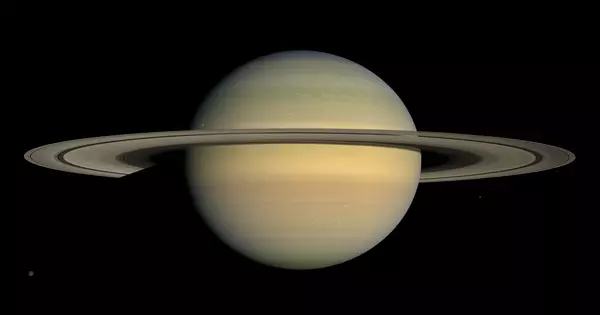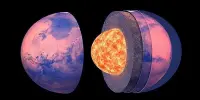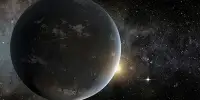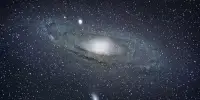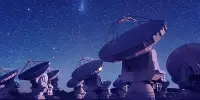After a successful launch and commissioning, the James Webb Space Telescope (JWST) was projected to offer breathtaking photos and data of several astronomical objects, including Saturn and its rings.
In this stunning infrared image, Saturn’s distinctive rings appear to glow eerily, revealing surprising structures in Saturn’s atmosphere. This image provides background for an observing program that will put the telescope’s ability to detect faint moons and brilliant rings around the planet to the test. Any new moons identified could help scientists piece together a more complete picture of Saturn’s current system as well as its past.
At the exact infrared wavelength (3.23 microns) depicted in this image, methane gas absorbs nearly all of the sunlight falling on the atmosphere. As a result, Saturn’s well-known striped patterns are obscured by the methane-rich upper atmosphere, which obscures our view of the primary clouds. Instead, the disk of Saturn appears dark, and we notice features associated with high-altitude stratospheric aerosols, such as huge, dark, and diffuse structures in Saturn’s northern hemisphere that do not fit with the planet’s latitude lines. Interestingly, comparable wave-like features were seen in early JWST NIRCam studies of Jupiter.
We are very pleased to see JWST produce this beautiful image, which is confirmation that our deeper scientific data also turned out well. We’re excited to dig into the deep exposures and see what surprises await.
Dr. Matthew Tiscareno
Saturn’s rings, unlike its atmosphere, lack methane, therefore at this infrared wavelength, they are no darker than usual and readily outshine the darkened planet. This new image of Saturn also shows fine intricacies within the ring system, as well as a number of the planet’s moons such as Dione, Enceladus, and Tethys.
“We are very pleased to see JWST produce this beautiful image, which is confirmation that our deeper scientific data also turned out well,” stated Dr. Matthew Tiscareno, the SETI Institute’s senior research scientist who spearheaded the process of constructing this observation. “We’re excited to dig into the deep exposures and see what surprises await.”
Over the past few decades, missions like NASA’s Pioneer 11, Voyagers 1 and 2, the Cassini spacecraft and the Hubble Space Telescope have observed Saturn’s atmosphere and rings. The image captured by JWST is just a taste of what this observatory will uncover about Saturn in the coming years as scientists. This image is part of a suite of deeply exposed images where researchers hope to identify new ring structures and perhaps even new moons of Saturn.

Moving from the inner to the outer features of Saturn’s rings, we can observe the dark C ring, the bright B ring, the narrow and dark Cassini Division, and the medium-bright A ring with the dark Encke Gap near its outer edge. Additionally, off the outer edge of the A ring, we can see the narrow strand known as the F ring. The rings cast a shadow on the planet and vice versa, creating intriguing visual effects.
In-depth exposures not displayed in this image will allow scientists to study Saturn’s fainter rings, including as the thin G ring and diffuse E ring, which are not visible in this image. Saturn’s rings are made up of a variety of rocky and icy debris ranging in size from a grain of sand to mountains on Earth. JWST was recently used to examine Enceladus, and researchers observed a large plume originating from the moon’s southern pole. This jet comprises particles as well as a large amount of water vapor, which contributes to Saturn’s E ring.
In this view, we can see normal seasonal fluctuations between Saturn’s northern and southern poles. Saturn’s northern hemisphere is currently in summer, while the southern hemisphere is emerging from winter darkness. The northern pole, on the other hand, appears exceptionally black, maybe due to an unexplained seasonal phenomenon impacting polar aerosols. A slight brightening at the edge of Saturn’s disk could be due to high-altitude methane fluorescence or emission from the trihydrogen ion (H3+) in the ionosphere. JWST spectroscopy could assist confirm these possibilities.
